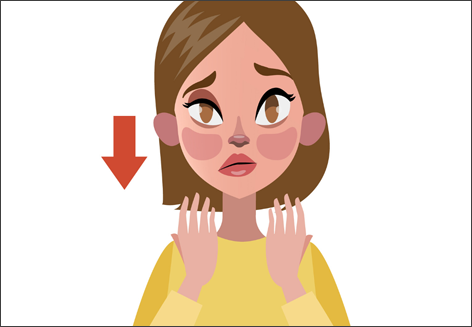n Switzerland, approx. 16,000 patients suffer a stroke every year. It is the most common life-threatening neurological disorder. A quarter of these patients die within a short period of time. Of those who survive, 50-80% remain disabled and are often no longer able to lead an independent life.
A stroke usually hits the patient and their relatives suddenly and unexpectedly.
What is a stroke?
In about 85% of the patients, a stroke is caused by a sudden blockage (occlusion) of an artery supplying the brain with blood and oxygen. This blockage leads to reduced blood flow in the affected parts of the brain.
In about 15% of all cases, a stroke is caused by a cerebral haemorrhage, a spontaneous bleeding into the brain.
The risk for a stroke increases with age. But did you know that young people, including adolescents, and children (and foetuses and newborns) can also suffer a stroke?
And do you know that taking the birth control pill can double your risk of suffering a stroke? It’s still a low risk, but a risk nevertheless. Add a family history of stroke and smoking, the risk increases even more.
In 2014, the AHA (American Heart Association) Journal (in cooperation with the American Stroke Association) published an article with “Guidelines for the Prevention of Stroke in Women”. These include special recommendations for younger women:
- A contraceptive pill should only be prescribed after a check for high blood pressure.
- Pregnant women with high blood pressure should take a small dose of acetylsalicylic acid (e.g. aspirin).
- Another known risk factor for strokes in younger women are migraines with an aura.
- Migraines with an aura in combination with smoking pose a particular risk. Patients should therefore urgently be advised to quit smoking.
How do I recognise a stroke?
Depending on which brain region is affected, different functional disorders can occur.
F. Face – facial drooping
A. Arms – arm weakness, numbness, or paralysis
S. Speech – speech difficulties
T. Time – Time to call (every minute counts)
A stroke is an emergency! The more time passes, the more brain tissue can die and the greater the permanent damage. Literally, every minute counts!
The “F.A.S.T. test” is a simple test, originally developed for professional emergency services for quick situation identification.
But in the meantime, this simple test is also taught laypeople and first aiders to early recognise typical symptoms of a stroke.
Three simple tests show facial asymmetry/facial drooping (Face), weakness, numbness or paralysis (Arms) and speech difficulties (Speech).
If any, even just one, of these symptoms suddenly occur, IMMEDIATELY call EMS (Emergency Medical Services). In CH, call 144, in Europe generally 112.
The first few hours after the event determine the fate of the patient. Remember, in 85% of all cases, a blood clot, also called thrombus, is the cause for the stroke. It is possible to open the blocked artery in the brain using a drug that can dissolve the blood clot. This procedure is called “thrombolysis”. BUT, a thrombolysis can only be done in the first 4.5 hours. Most patients arrive in the hospital too late for this procedure and in Switzerland, only approx. 5% of stroke patients are lysed.
In many cases, a stroke does not come out of the blue but earlier warning signs were not recognised. Pay attention to:
- brief one-sided paralysis, weakness or numbness
- brief one-sided blindness or visual disturbances
- short-term speech disorders
- dizziness, gait insecurity, balance problems, sudden falls
- for the first time and suddenly occurring, extremely severe headache
Posted on July 01, 2020 by Luitgard Holzleg
This entry was posted in Blog and tagged brain injury, every minute counts, fast test, gender medicine, prevention, stroke, stroke awareness, stroke recovery, stroke rehab. Bookmark the permalink.

